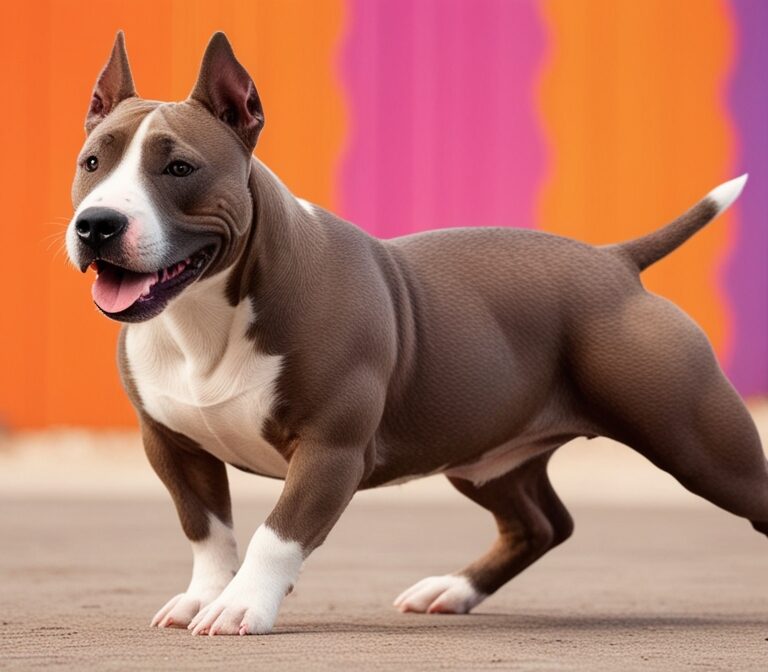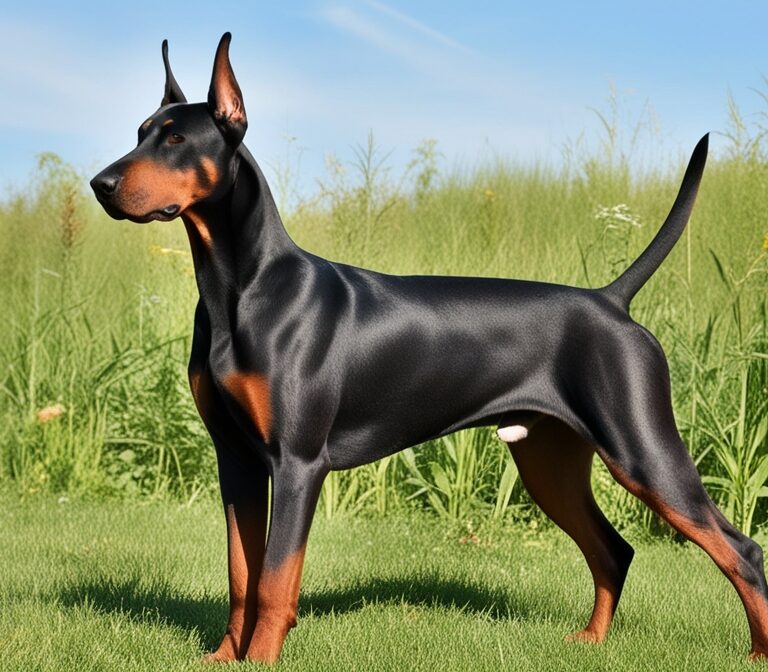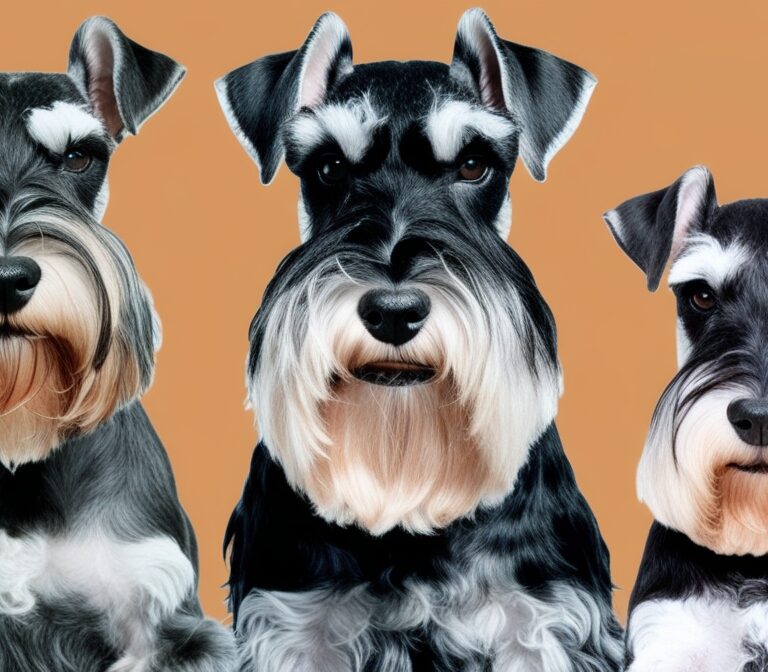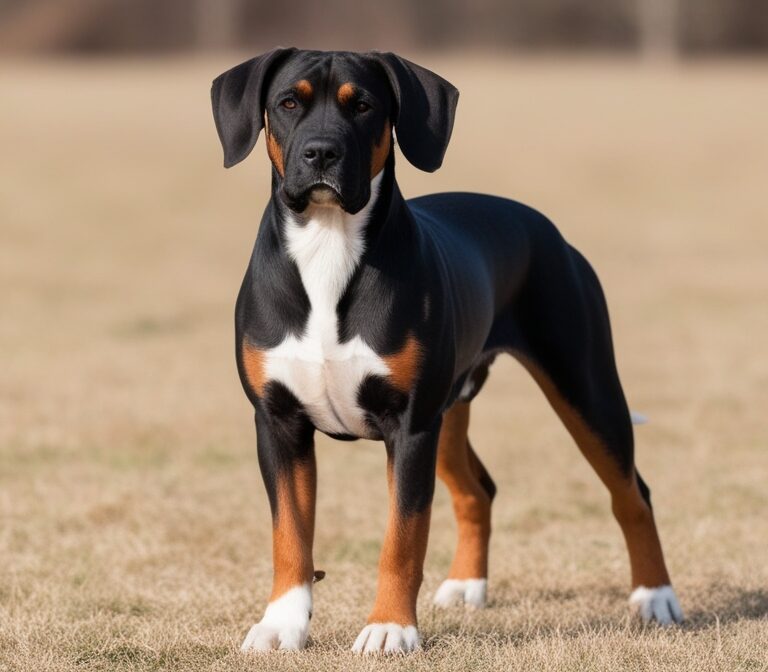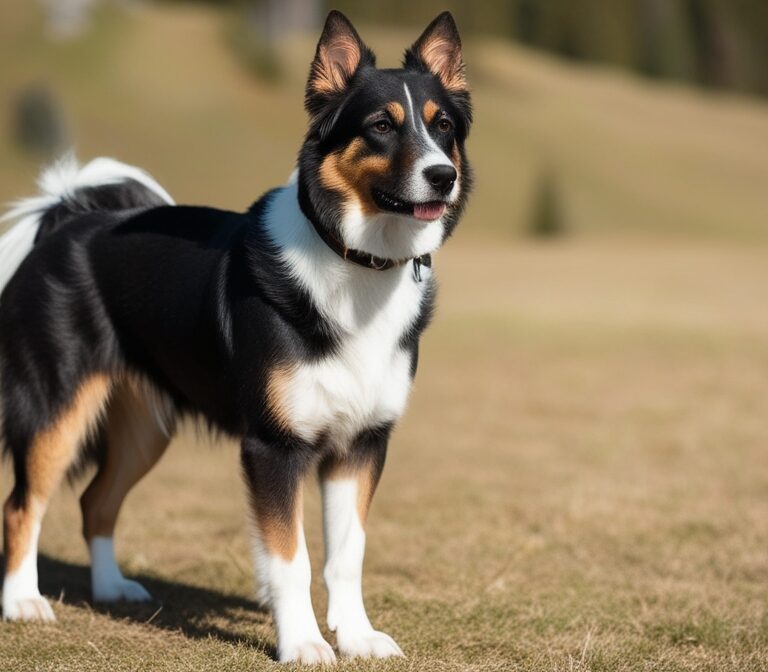Australian Cattle Dog: Complete Breed Guide for Owners and Enthusiasts
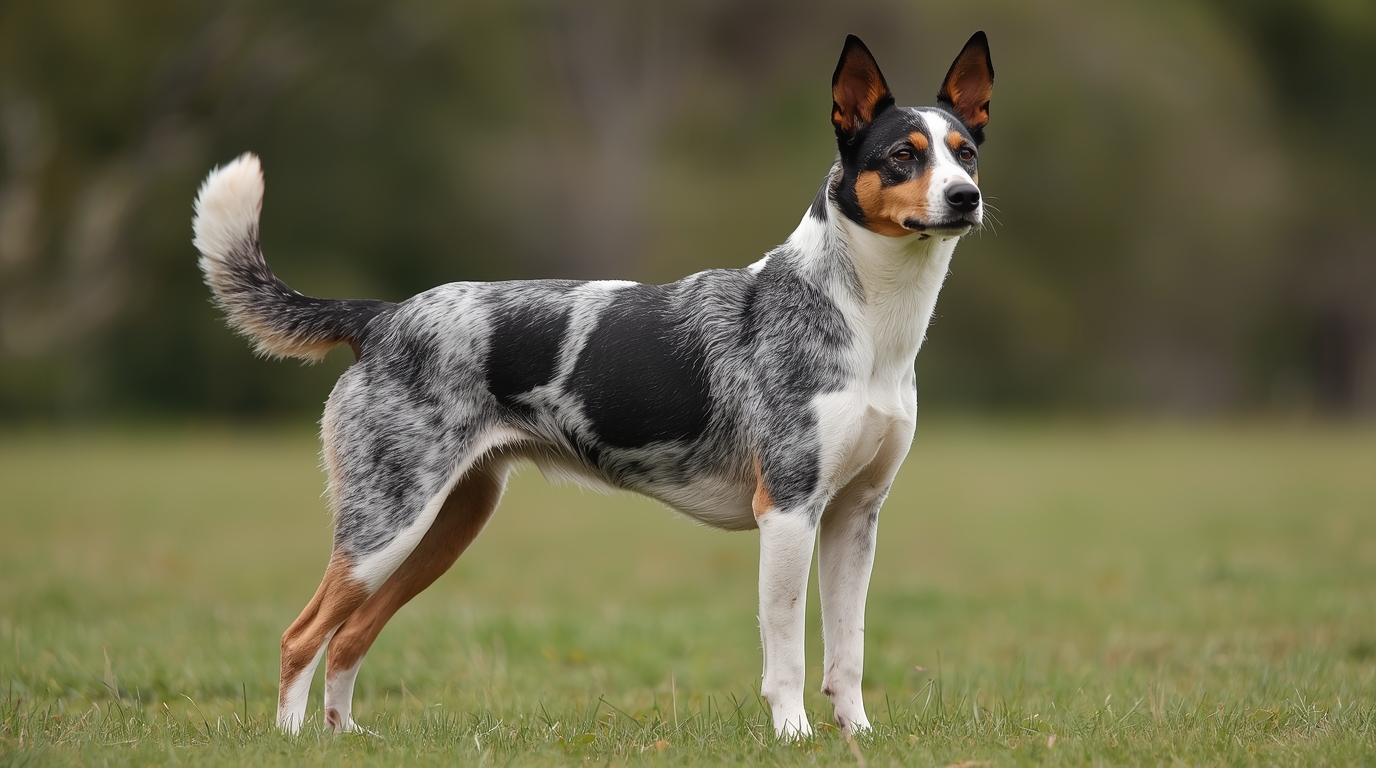
Introduction to the Australian Cattle Dog
The Australian Cattle Dog (ACD), often referred to as the Blue Heeler or Red Heeler, is a highly intelligent and energetic herding breed originating from Australia. Known for their stamina, loyalty, and sharp working instincts, these dogs were bred specifically to handle the demanding task of driving cattle across vast and rugged terrains. They belong to the Herding Group, recognized by major kennel clubs such as the American Kennel Club (AKC), United Kennel Club (UKC), and the Fédération Cynologique Internationale (FCI).
What makes the Australian Cattle Dog particularly remarkable is its unique blend of endurance and intelligence. Unlike some breeds that thrive purely on companionship, ACDs require purpose-driven activities. They are happiest when given a job—whether it’s herding livestock, excelling in agility sports, or participating in obedience training.
Their temperament is defined by traits such as being loyal, obedient, cautious, protective, and energetic. These qualities make them excellent working dogs and devoted companions but can also challenge inexperienced owners who may underestimate their needs.
In today’s context, Australian Cattle Dogs have transitioned from being purely working ranch dogs to thriving in active family households, provided their exercise and mental stimulation requirements are met. Prospective owners must understand that while these dogs are affectionate and loyal, they are not “low-maintenance pets.”
This article offers a comprehensive overview of the breed, including its history, appearance, temperament, health issues, training requirements, and ownership considerations. By the end, you’ll know exactly whether the Australian Cattle Dog is the right match for your lifestyle.
History and Origin of the Breed
The history of the Australian Cattle Dog is deeply tied to the development of Australia’s cattle industry during the 19th century. Ranchers and settlers needed a hardy, intelligent, and resilient herding dog capable of managing cattle over long distances and under harsh conditions. Traditional European herding dogs, such as the Collies, were not well-suited to the hot climate and rugged terrain of the Australian outback.
To create a more effective herder, early breeders crossed Blue Merle Collies with native Australian Dingoes. This combination produced a tough, alert, and resourceful dog with the stamina to endure long herding sessions. Later, Dalmatian blood was introduced to enhance loyalty and compatibility with horses, while Black and Tan Kelpies contributed further herding intelligence and agility.
The result was the Australian Cattle Dog, a breed recognized for its unmatched working ability and reliability. Their nickname, “Heelers”, comes from their distinctive herding style—nipping at the heels of cattle to move them forward. Depending on their coat coloration, they are called Blue Heelers or Red Heelers.
By the late 1800s, the breed had become indispensable to Australian ranchers, and their reputation soon spread internationally. In 1980, the AKC officially recognized the Australian Cattle Dog as part of its Herding Group.
Today, the breed remains both a working ranch dog and a beloved family companion, with its legacy rooted in a history of practical breeding for function over form. This historical context explains why the Australian Cattle Dog is still one of the most active, driven, and intelligent breeds in the canine world.
Alternative Names: Blue Heeler, Red Heeler, Queensland Heeler
The Australian Cattle Dog is known by several alternative names that reflect its coat coloration, regional history, and herding style. Understanding these names helps owners and researchers recognize references to the same breed across different contexts.
- Blue Heeler: This nickname refers to the dog’s blue-speckled or blue-mottled coat. Blue Heelers are among the most recognized variations and often appear in herding competitions and popular media.
- Red Heeler: This variant has a red-speckled or red-mottled coat, with the same temperament and working ability as the Blue Heeler. The coloration is due to recessive genes inherited from their breeding ancestry.
- Queensland Heeler: This term highlights the breed’s development in Queensland, Australia, where the need for strong herding dogs was most urgent during the cattle boom. Ranchers across the state relied heavily on the breed for livestock management.
- Heeler: A general term derived from their unique herding technique—nipping at the heels of cattle to move them forward without causing injury.
While the Australian Cattle Dog remains the official name recognized by kennel clubs, these alternative names are still widely used by owners, farmers, and dog enthusiasts. In fact, search engine data shows that “Blue Heeler” is often a more common search query than the official breed name.
These naming variations also demonstrate the breed’s global recognition and highlight the importance of understanding synonyms when researching breed information. Whether someone refers to them as a Blue Heeler, Red Heeler, or Queensland Heeler, they are speaking about the same versatile and hardworking herding breed.
Physical Appearance and Characteristics
The Australian Cattle Dog is a medium-sized, muscular, and athletic breed designed for stamina and agility. Its body structure reflects its working heritage—strong yet compact, allowing it to cover long distances while maintaining speed and endurance.
Size and Weight: Adult males typically weigh 35–50 pounds (16–23 kg), while females are slightly lighter at 30–45 pounds (14–20 kg). Their height ranges from 17 to 20 inches (43–51 cm) at the shoulder. This moderate size makes them highly maneuverable, essential for dodging kicks while herding livestock.
Coat: The coat is short, dense, and weather-resistant, requiring minimal grooming but providing protection against heat, rain, and cold. The breed comes in two primary color variations:
- Blue: Blue-mottled or blue-speckled with possible black markings.
- Red: Red-mottled or red-speckled, often with darker red patches.
Both colors have distinct speckling or mottling patterns, giving them their “Heeler” nicknames. Puppies are usually born white, later developing their blue or red coloring.
Head and Face: The head is broad with a slightly curved skull, and the ears are upright and alert, reflecting constant attentiveness. Their eyes are dark brown, oval-shaped, and intelligent, often conveying caution mixed with curiosity.
Tail: A moderately long, low-set tail with a slight curve helps them balance during fast movements.
Overall Impression: Every aspect of the Australian Cattle Dog’s physical appearance indicates a dog built for work, speed, and resilience. Their powerful build, protective double coat, and expressive face make them both functional herders and appealing companions. Unlike ornamental breeds, every feature of the Australian Cattle Dog exists for practical working purposes.
Temperament of the Australian Cattle Dog
The temperament of the Australian Cattle Dog combines loyalty, intelligence, caution, and energy. This is a dog that thrives in environments where it has purpose and structure. Unlike more docile companion breeds, ACDs bring a working-dog mindset into family life.
Loyalty: Australian Cattle Dogs form intense bonds with their owners, often displaying a one-person loyalty similar to breeds like the German Shepherd. They are protective of their family, making them excellent watchdogs.
Energetic Nature: These dogs are high-energy and demand regular physical and mental stimulation. Without proper outlets, their energy may manifest as destructive behaviors such as chewing, digging, or excessive barking.
Cautious and Alert: ACDs are naturally cautious around strangers. While not aggressive by default, they may be wary, reflecting their heritage as protective working dogs. Early socialization is critical to prevent excessive suspicion.
Obedience and Intelligence: With consistent training, they are highly obedient and responsive, excelling in obedience trials, agility, and herding competitions. Their quick learning ability also makes them skilled in advanced commands and tasks.
Protective Instincts: Because of their strong guarding tendencies, they may try to “herd” children or other pets by nipping at heels. This behavior is instinctual rather than aggressive but requires correction through training.
In short, the Australian Cattle Dog’s temperament is best suited for active, experienced owners who understand the demands of a working breed. They offer unwavering loyalty and companionship but require firm guidance and plenty of activity.
Intelligence and Trainability
The intelligence of the Australian Cattle Dog ranks among the highest of all dog breeds. According to canine psychologist Stanley Coren, who studied dog intelligence, ACDs fall into the top tier of working dogs, able to learn new commands in fewer than five repetitions and obeying on the first command over 95% of the time.
Problem-Solving Ability: These dogs are natural problem-solvers. On a farm, they adapt quickly to moving livestock in difficult terrain. In domestic settings, they figure out puzzles, escape routes, or ways to get attention—sometimes to their owners’ surprise.
Training Approach: Australian Cattle Dogs respond best to positive reinforcement training methods, including rewards such as treats, praise, and toys. Harsh discipline can backfire, as these dogs are independent thinkers who require respect and consistency.
Versatility: Their intelligence makes them excel in various canine sports, including:
- Agility competitions (navigating obstacle courses)
- Obedience trials (precision in commands)
- Herding trials (demonstrating working instincts)
- Search and rescue work (tracking and scent detection)
Challenges in Training: While their smarts are an advantage, it can also be a challenge. Australian Cattle Dogs can become stubborn and manipulative if they sense inconsistency in their training. Early obedience classes, structured routines, and continuous engagement are essential.
In the right environment, their intelligence transforms into obedience, versatility, and problem-solving excellence, making them one of the most trainable breeds in the world.
Exercise Requirements
The exercise requirements of an Australian Cattle Dog are significantly higher than average companion breeds. As a dog bred for long-distance herding, their bodies and minds are designed for constant activity.
Daily Exercise Needs: Experts recommend at least 90–120 minutes of exercise per day, divided into multiple sessions. This should include a mix of high-energy activities and mental stimulation.
Best Activities:
- Running and Hiking: Perfect for owners who enjoy outdoor adventures.
- Agility Training: Uses their speed, focus, and intelligence.
- Herding Practice: Farms or herding clubs provide environments to satisfy instinctual drives.
- Fetch and Frisbee: Interactive games that stimulate both mind and body.
- Obedience Drills: Keeps their intelligence sharp and prevents boredom.
Consequences of Under-Exercise: Without enough activity, Australian Cattle Dogs can develop undesirable behaviors such as destructive chewing, digging, restlessness, or excessive barking. They may also attempt to “herd” people or pets indoors due to pent-up energy.
Ideal Homes: The breed is best suited for active families, rural homes, or individuals who enjoy outdoor activities. Apartment living is possible only if the owner commits to extensive daily exercise.
By meeting their exercise requirements, owners ensure that the Australian Cattle Dog remains a healthy, well-adjusted, and happy companion.
Grooming and Coat Care
The Australian Cattle Dog is considered a low-maintenance breed when it comes to grooming, thanks to its short, dense, weather-resistant double coat. While not hypoallergenic, their coat is designed to protect them from rain, sun, and harsh climates, making upkeep relatively simple compared to long-haired breeds.
Shedding Pattern: These dogs shed moderately year-round, with two heavier “blow coat” periods during spring and fall. Regular grooming during these seasonal transitions helps control loose fur and keeps the coat healthy.
Brushing Routine: Weekly brushing with a slicker brush or rubber curry comb is usually sufficient. During shedding season, more frequent brushing helps remove dead hair and reduce dander. Brushing also stimulates natural oils that keep the coat shiny.
Bathing Needs: Australian Cattle Dogs rarely require frequent baths unless they get particularly dirty. Bathing once every 2–3 months or as needed is adequate. Over-bathing can strip the coat of natural oils and cause skin irritation.
Other Grooming Tasks:
- Ears: Check weekly for wax buildup, dirt, or signs of infection.
- Nails: Trim every 3–4 weeks to prevent discomfort and joint strain.
- Teeth: Brush at least twice per week or provide dental chews for oral health.
- Paws: Inspect regularly for cuts or debris, especially if the dog is active outdoors.
Skin Care Considerations: Because of their active lifestyle, Australian Cattle Dogs are prone to cuts, scrapes, and ticks. Owners should perform routine checks after hikes or farm work.
Overall, the breed’s grooming requirements are minimal compared to high-maintenance dogs like Poodles or Collies. However, consistent care ensures the coat remains healthy, glossy, and protective while supporting overall wellbeing.
Nutrition and Diet Guidelines
A proper diet and nutrition plan is vital for the energy demands and long lifespan of the Australian Cattle Dog. As a highly active working breed, they require food that supports muscle development, joint health, and sustained energy levels.
Caloric Needs:
- Active adults: 1,200–1,600 calories per day.
- Less active or senior dogs: 900–1,200 calories per day.
- Puppies: Require more frequent, smaller meals to support growth and development.
Macronutrient Balance:
- Protein (25–30%): Essential for muscle repair and energy. High-quality sources include chicken, beef, lamb, or fish.
- Fats (12–18%): Support energy, coat health, and brain function. Healthy fats can come from fish oil or flaxseed.
- Carbohydrates (30–40%): Should come from whole grains, sweet potatoes, or brown rice for slow energy release.
Feeding Frequency: Adult Australian Cattle Dogs do best with two meals per day. Puppies should be fed 3–4 smaller meals until they reach 6 months of age.
Special Considerations:
- Joint Health: Since ACDs are prone to hip dysplasia, supplements like glucosamine and chondroitin can be beneficial.
- Weight Control: Their active nature means they burn calories quickly, but if under-exercised, they can become overweight. Controlled portions and exercise balance are key.
- Hydration: Access to fresh water at all times is essential, especially after vigorous exercise.
Whether fed a high-quality kibble, raw diet, or homemade meals, consistency and portion control are crucial. Owners should consult a veterinarian to ensure the diet supports the dog’s activity level, age, and health condition.
Health Concerns in Australian Cattle Dogs
The Australian Cattle Dog is generally a healthy breed, with a lifespan often exceeding 12–16 years. However, like many purebred dogs, they are predisposed to certain genetic and age-related health conditions.
Common Health Issues:
- Hip Dysplasia: A genetic condition where the hip joint develops improperly, leading to arthritis or lameness. Preventative measures include joint supplements, weight management, and appropriate exercise.
- Progressive Retinal Atrophy (PRA): A degenerative eye disorder that can eventually cause blindness. Responsible breeders test for PRA to minimize risk.
- Congenital Deafness: Relatively common in ACDs, particularly those with more white in their coat. BAER (Brainstem Auditory Evoked Response) testing is used to screen puppies.
- Elbow Dysplasia: Similar to hip dysplasia but affecting the front legs, often causing mobility issues.
- Dental Issues: Without regular cleaning, tartar buildup can lead to periodontal disease.
- Obesity-Related Problems: If not exercised enough, ACDs can gain weight, putting stress on joints and organs.
Preventative Care:
- Annual vet check-ups and genetic screenings are recommended.
- Vaccinations and parasite prevention should be kept up to date.
- Balanced nutrition and daily exercise are crucial for maintaining long-term health.
Despite these risks, Australian Cattle Dogs are one of the healthiest and longest-living medium breeds, especially when sourced from responsible breeders who conduct health testing.
Average Lifespan of the Breed
One of the most appealing aspects of the Australian Cattle Dog is its impressive lifespan. On average, they live 12 to 16 years, with many individuals exceeding that range when properly cared for. Some documented cases show ACDs living up to 19–20 years, making them one of the longest-living purebred dogs.
Factors Influencing Lifespan:
- Genetics: Dogs from reputable breeders with health-tested lineage typically live longer.
- Diet and Nutrition: High-quality food tailored to activity levels prolongs health.
- Exercise: Regular activity keeps joints, muscles, and weight in balance.
- Preventative Health Care: Routine vet visits, dental care, and vaccinations reduce risks.
Working Dogs vs. Companions: Interestingly, Australian Cattle Dogs used in active farm work often live longer than those kept as under-exercised companions. This highlights their need for a purpose-driven lifestyle.
Comparison to Other Breeds: While many medium breeds average around 10–13 years, the ACD frequently surpasses this due to its robust genetic background and functional breeding history.
In summary, the Australian Cattle Dog is not just energetic and intelligent but also remarkably long-lived, offering owners nearly two decades of companionship when given proper care.
Living Environment Suitability
The Australian Cattle Dog is highly adaptable, but not every living environment will suit its energy levels, temperament, and exercise requirements. Unlike low-activity breeds that can thrive in small apartments, this breed requires ample space, stimulation, and activity.
Best Environments:
- Rural Properties and Farms: These are ideal, as ACDs were bred for herding cattle across large expanses. Open land allows them to fulfill their natural instincts.
- Suburban Homes with Large Yards: A fenced yard gives them freedom to play and exercise safely, though owners must still commit to daily structured exercise.
- Active Households: Families or individuals who enjoy running, hiking, or outdoor sports provide excellent outlets for their energy.
Challenging Environments:
- Small Apartments: While possible, keeping an ACD in a small apartment is difficult unless owners commit to 2+ hours of daily exercise. Without this, they become bored and destructive.
- Sedentary Homes: Owners who prefer a quiet, low-energy lifestyle will struggle with the breed’s needs.
Climate Adaptability: Thanks to their weather-resistant coat, Australian Cattle Dogs tolerate both hot and cold climates well. However, in extreme heat, they need shade and hydration; in cold climates, their double coat offers insulation but should not substitute proper shelter.
Indoor Behavior: Indoors, they are usually calm if exercised properly. Without enough activity, they may herd children, chase pets, or chew household items. Training and socialization are key.
In conclusion, the Australian Cattle Dog is best suited for active owners with space and commitment. While adaptable, their lifestyle demands cannot be compromised. Matching their environment with their energy and purpose-driven nature ensures a harmonious relationship.
Compatibility with Families
The Australian Cattle Dog can make a wonderful family companion, but compatibility depends on the family’s lifestyle, experience, and commitment to training.
With Children: ACDs are generally good with children, especially when raised together. Their protective nature makes them excellent guardians, but their herding instinct may cause them to nip at children’s heels while playing. Early training helps redirect this behavior into more appropriate play.
With Other Pets: They can live peacefully with other dogs, but dominance behaviors may occur, especially with same-sex dogs. With smaller pets such as cats or rabbits, their chasing instinct can be an issue unless carefully socialized.
Temperament in Families:
- Protective and Loyal: They bond strongly with family members and often choose one “favorite person.”
- Energetic Playmates: Their stamina makes them perfect companions for active children or teenagers who enjoy outdoor activities.
- Cautious with Strangers: While loyal to family, they are naturally wary of strangers. Proper socialization helps them remain balanced.
Best Fit Families:
- Families who enjoy outdoor activities and can involve the dog in hikes, sports, and interactive play.
- Experienced dog owners who understand the demands of a working breed.
Challenges:
- May overwhelm very young children with their energy.
- Require training to prevent herding or nipping behaviors indoors.
In short, Australian Cattle Dogs can be excellent family dogs, but they need a family willing to provide structure, activity, and patience.
Working Dog Capabilities
The Australian Cattle Dog was bred for work, and its capabilities in this area are unmatched. Recognized as one of the most efficient herding breeds, they continue to thrive as working dogs on farms, ranches, and competitive herding trials.
Herding Ability:
- Known for their heeling style, where they nip at cattle’s legs to move them forward without causing harm.
- Highly effective with both cattle and sheep, often outperforming other breeds in challenging environments.
- Possess natural problem-solving skills, adjusting their technique based on livestock behavior.
Endurance and Stamina: Bred to cover vast distances in the Australian outback, they can work for long hours without tiring. This stamina translates well to modern activities like long hikes, running, and agility training.
Versatility in Work: Beyond herding, ACDs excel in:
- Search and rescue operations (due to keen scent and intelligence).
- Police and military work (for detection and patrol tasks).
- Service and therapy roles (though less common, their loyalty and intelligence make them effective).
Competition Sports: Australian Cattle Dogs are frequent participants in herding trials, obedience competitions, and agility events. Their focus, drive, and intelligence give them a competitive edge.
Despite their adaptability, their true nature shines brightest when given working responsibilities. A bored ACD without a “job” may channel its energy into destructive behavior, underscoring why many owners engage them in structured sports or working environments.
Australian Cattle Dog vs. Other Herding Breeds
When comparing the Australian Cattle Dog with other herding breeds, several distinctions stand out. While all herding dogs share intelligence and stamina, ACDs bring a unique combination of toughness, independence, and loyalty.
Australian Cattle Dog vs. Border Collie:
- Border Collies are often considered the most intelligent breed and excel in precision herding using eye contact and control.
- ACDs use heeling techniques and have greater physical toughness, making them more suited for managing cattle than sheep.
- Border Collies are more responsive to commands, while ACDs are more independent problem-solvers.
Australian Cattle Dog vs. Australian Shepherd:
- Australian Shepherds are slightly larger and often more sociable with strangers.
- ACDs are more protective and reserved, making them better watchdogs.
- Both breeds need significant exercise, but ACDs are typically more hard-driving and stubborn.
Australian Cattle Dog vs. Kelpie:
- The Australian Kelpie is another iconic Australian herding breed. Kelpies are lighter, faster, and more agile.
- ACDs are sturdier, stronger, and better suited for rough cattle work, whereas Kelpies excel with sheep.
In conclusion, while all herding breeds are intelligent and active, the Australian Cattle Dog is set apart by its resilience, protective instincts, and independent problem-solving abilities. They are not just herders—they are guardians, workers, and loyal companions.
Adoption and Breeder Considerations
When looking for an Australian Cattle Dog, prospective owners face two main paths: adopting from a rescue or purchasing from a reputable breeder. Both options come with distinct advantages and responsibilities.
Adoption from Rescue Organizations:
Many ACDs end up in shelters because inexperienced owners underestimate their energy levels and working needs. Rescuing one offers a dog a second chance and often includes:
- Lower cost than purchasing from a breeder.
- Adult dogs that may already be trained.
- Rescue groups that specialize in herding breeds, such as the Australian Cattle Dog Rescue Association (ACDRA) in the U.S.
Breeder Considerations:
Choosing a responsible breeder ensures you get a healthy dog with documented lineage and health clearances. Important breeder practices include:
- Genetic testing for conditions such as hip dysplasia, congenital deafness, and progressive retinal atrophy.
- Early socialization of puppies to build stable temperaments.
- Transparency regarding pedigree, health history, and puppy rearing conditions.
Red Flags in Breeders:
- Refusing health documentation.
- Prioritizing coat color over health and temperament.
- Selling puppies before 8 weeks old.
- Mass breeding or “puppy mills.”
Decision Factors:
- If you want a specific bloodline for working or competition, a breeder is the right path.
- If you seek a companion and want to save a life, adoption may be more fulfilling.
Ultimately, whether adopting or buying, the priority should be securing a dog from a responsible source committed to the welfare of the breed.
Cost of Owning an Australian Cattle Dog
The cost of ownership is an important consideration when bringing an Australian Cattle Dog into your life. While purchase or adoption is the first expense, the lifetime costs of healthcare, food, and training add up significantly.
Initial Cost:
- Adoption fees: $150–$400.
- Reputable breeder price: $600–$1,200, depending on lineage and training.
Annual Expenses:
- Food: $400–$600 per year, based on high-quality kibble or raw diet.
- Routine Vet Care: $300–$500 for vaccinations, checkups, and parasite prevention.
- Health Insurance: $400–$600 annually (optional but recommended).
- Training Classes: $200–$500, especially important for puppies.
- Grooming: Minimal at $100–$200 annually, mostly for nail trims and supplies.
- Miscellaneous (toys, leashes, bedding): $150–$300.
Lifetime Estimate: Over an average lifespan of 12–16 years, the total cost can reach $15,000–$20,000, depending on healthcare needs.
Cost-Benefit Perspective:
- For working farms, the cost is offset by the dog’s herding efficiency and labor savings.
- For families, the “investment” is in the form of companionship, protection, and loyalty.
Owning an Australian Cattle Dog is not inexpensive, but for the right household, the return in loyalty, protection, and utility far outweighs the costs.
Common Training Challenges
While the Australian Cattle Dog is highly intelligent and trainable, they also present unique training challenges due to their independence, stubbornness, and herding instincts.
Stubbornness: Their intelligence often makes them independent thinkers, which can come across as defiance. If commands are inconsistent or repetitive, they may lose interest. Owners must use positive reinforcement and keep training sessions varied.
Herding Behavior: Their instinct to nip at heels may transfer to children, pets, or even adults. This is not aggression but rather instinct. It requires redirection through commands and appropriate activities, such as fetch or structured agility exercises.
Protectiveness: ACDs are naturally wary of strangers. Without proper socialization, this wariness can develop into overprotectiveness or reactivity. Controlled exposure from a young age helps them learn balance.
High Energy in Training: Their boundless energy means they need mental and physical challenges during training. Long repetitive drills bore them quickly. Instead, short, engaging sessions with clear rewards are more effective.
Separation Anxiety: Due to their loyalty, Australian Cattle Dogs may develop anxiety if left alone too long. Crate training, gradual independence training, and puzzle toys can help alleviate this issue.
Best Training Practices:
- Start early with puppy obedience classes.
- Use consistent commands and hand signals.
- Incorporate work-like tasks to satisfy their instincts.
- Avoid harsh punishment, which can damage trust.
With patience and structure, these training challenges transform into strengths, allowing the ACD to become one of the most obedient and versatile breeds.
Socialization Needs
Socialization is critical for an Australian Cattle Dog, given their natural caution, protectiveness, and strong instincts. Early and consistent exposure ensures they develop into well-rounded companions.
Puppy Stage: The critical window for socialization is between 3 and 14 weeks of age. During this time, puppies should be gently exposed to:
- Different people (children, adults, strangers).
- Other dogs and pets.
- Various environments (parks, sidewalks, farms).
- Household noises and daily activities.
Benefits of Socialization:
- Reduces excessive shyness or fear.
- Prevents overprotectiveness or aggression toward strangers.
- Encourages adaptability in new environments.
- Builds confidence for activities such as obedience trials or agility sports.
Adult Dogs: Even adult ACDs benefit from ongoing socialization. Activities like dog sports, playdates, and structured group classes provide continued opportunities for positive interaction.
Challenges Without Socialization: A poorly socialized Australian Cattle Dog may become overly territorial, difficult to manage around strangers, and even reactive with other dogs. This is one of the leading reasons ACDs are surrendered to rescues.
Best Practices:
- Start early and remain consistent.
- Pair new experiences with positive reinforcement.
- Avoid overwhelming situations that could create fear.
Proper socialization ensures the Australian Cattle Dog grows into a confident, well-mannered, and trustworthy companion, equally comfortable in family settings and working environments.
Myths and Misconceptions about the Breed
The Australian Cattle Dog is admired for its intelligence, stamina, and loyalty, but it is also surrounded by several myths and misconceptions that can mislead prospective owners. Clarifying these misunderstandings ensures realistic expectations.
Myth 1: Australian Cattle Dogs are aggressive.
- Truth: They are naturally cautious and protective, not inherently aggressive. Poor training and lack of socialization can cause undesirable behaviors, but with proper guidance, ACDs are balanced, loyal companions.
Myth 2: They don’t make good family pets.
- Truth: When raised with children and trained appropriately, ACDs are excellent family companions. Their herding instinct may cause nipping, but this is instinctual behavior, not aggression, and can be redirected.
Myth 3: They can live happily with minimal exercise.
- Truth: This is one of the most damaging misconceptions. ACDs are working dogs bred for long days of activity. Without at least 90–120 minutes of daily exercise, they become restless, destructive, and unhappy.
Myth 4: They’re only suitable for farms.
- Truth: While they thrive in rural environments, many ACDs live successfully in suburban or even urban settings—provided their exercise, mental stimulation, and training needs are met.
Myth 5: All Australian Cattle Dogs are blue.
- Truth: The breed comes in both blue (Blue Heelers) and red (Red Heelers). Both share identical temperaments and working ability.
Myth 6: They are hypoallergenic.
- Truth: ACDs are not hypoallergenic. Their shedding, especially during seasonal coat blows, can trigger allergies in sensitive individuals.
By debunking these myths, it becomes clear that Australian Cattle Dogs are not inherently difficult; they are simply high-energy working dogs that require proper care, training, and commitment.
Australian Cattle Dog in Popular Culture
The Australian Cattle Dog has gained recognition beyond farms and ranches, appearing in movies, television, and cultural references worldwide. Their distinctive appearance and loyal temperament make them memorable in popular media.
Movies and TV Shows:
- “Mad Max 2: The Road Warrior” (1981): The protagonist’s loyal Blue Heeler became an iconic symbol of survival and companionship in dystopian cinema.
- “The Last of Us” (Video Game Adaptation): Though not a central character, Australian Cattle Dog–like breeds are often portrayed as loyal survivors in post-apocalyptic fiction.
Books and Literature:
Australian authors often highlight the breed in stories depicting rural Australian life, symbolizing resilience and loyalty.
Mascots and Symbols:
- ACDs are frequently used as mascots for ranching groups, farming communities, and Australian sports teams, emphasizing toughness and endurance.
- In Australia, the breed is often considered a cultural icon, representing the rugged, hardworking spirit of the outback.
Social Media Influence:
- Thousands of ACDs have dedicated Instagram and TikTok accounts, showcasing their agility, intelligence, and quirky personalities.
- Viral videos often feature them excelling in agility courses or showing their comedic stubbornness.
The Australian Cattle Dog’s presence in popular culture reflects its transformation from a working-class herder to a global symbol of loyalty, toughness, and intelligence.
Pros and Cons of Ownership
Like every breed, the Australian Cattle Dog comes with unique advantages and challenges. Prospective owners must evaluate these carefully before committing.
Pros:
- Loyal and Protective: Forms deep, unwavering bonds with owners.
- Highly Intelligent: Quick learner, excels in training and problem-solving.
- Energetic and Versatile: Perfect for active lifestyles, excelling in herding, agility, and obedience.
- Long Lifespan: Often lives 12–16 years, with many reaching 18–20.
- Low Grooming Needs: Short coat requires minimal maintenance.
- Excellent Watchdog: Naturally alert and protective.
Cons:
- High Exercise Requirements: Needs 90–120 minutes of daily physical and mental activity.
- Strong Herding Instincts: May nip at children, pets, or even adults.
- Wary of Strangers: Requires early socialization to prevent overprotectiveness.
- Stubborn and Independent: Can be challenging for inexperienced owners.
- Not Hypoallergenic: Regular shedding can trigger allergies.
- Separation Anxiety: Strong attachment may cause distress when left alone too long.
In summary, the Australian Cattle Dog is best for experienced, active owners who can provide the structure and activity it craves. For the right family, the pros far outweigh the cons, but for sedentary households, this breed can be overwhelming.
Tips for First-Time Owners
Owning an Australian Cattle Dog for the first time can be a rewarding but demanding experience. First-time owners must be prepared to meet the breed’s physical, mental, and social needs consistently.
1. Commit to Exercise:
Be prepared for at least 90–120 minutes of activity daily. This should include walks, runs, play sessions, and mental stimulation such as training drills or puzzle toys.
2. Start Training Early:
Enroll in puppy obedience classes as soon as possible. Consistency, positive reinforcement, and patience are key to shaping their intelligence into cooperation.
3. Socialize Extensively:
Introduce your puppy to different people, pets, and environments early. Proper socialization prevents excessive wariness or territorial behavior.
4. Provide Mental Challenges:
ACDs thrive on problem-solving. Use interactive toys, agility courses, or obedience tasks to keep their intelligent minds engaged.
5. Manage Herding Instincts:
Redirect nipping behavior by teaching commands and providing appropriate outlets like fetch or herding balls.
6. Establish Boundaries:
Because of their independence, clear rules are essential. Without boundaries, they may attempt to take control of household dynamics.
7. Prepare for Long-Term Commitment:
With lifespans up to 16 years or more, owning an ACD is a long-term responsibility requiring consistent energy, patience, and care.
For first-time owners willing to commit, the Australian Cattle Dog becomes a devoted companion, loyal guardian, and tireless adventure partner. For those unprepared, however, the breed’s demands can quickly feel overwhelming.
Frequently Asked Questions (FAQs)
Q1: Are Australian Cattle Dogs good family pets?
Yes, they can be excellent family companions when properly trained and socialized. Their loyalty and protective instincts make them devoted guardians. However, families must be prepared to manage their herding behavior and high energy levels.
Q2: Do Australian Cattle Dogs bark a lot?
They are not excessive barkers compared to other breeds, but they will bark to alert owners of strangers or unusual activity. Without sufficient exercise, boredom may lead to nuisance barking.
Q3: Are they hypoallergenic?
No, Australian Cattle Dogs are not hypoallergenic. Their double coat sheds year-round, and seasonal shedding is heavy. Allergy sufferers should consider this before ownership.
Q4: How much exercise do they need?
They require at least 90–120 minutes of daily exercise, including both physical activity and mental stimulation. Long walks, agility, and obedience training are essential to their well-being.
Q5: Can they live in apartments?
Yes, but only if the owner commits to their exercise needs. Without proper activity, they will become restless, destructive, or vocal in confined spaces.
Q6: How long do Australian Cattle Dogs live?
The average lifespan is 12–16 years, with some individuals living up to 19–20 years. Their longevity is among the best of medium-sized breeds.
Q7: Are Australian Cattle Dogs easy to train?
Yes, they are highly intelligent and respond well to positive reinforcement. However, their independence and stubbornness can challenge inexperienced trainers.
Q8: Do they get along with other pets?
They can coexist with other dogs if properly socialized. Their strong prey drive may cause them to chase smaller pets like cats or rabbits, so early introductions and supervision are important.
Q9: Do they need grooming?
Minimal grooming is required. Weekly brushing is enough, with more frequent care during shedding seasons. Bathing should only be occasional.
Q10: What is the difference between Blue Heelers and Red Heelers?
They are the same breed. The only difference is coat color: Blue Heelers have a mottled blue coat, while Red Heelers have a red-speckled coat.
Conclusion: Is the Australian Cattle Dog Right for You?
The Australian Cattle Dog is not a breed for everyone—but for the right person or family, it is one of the most loyal, intelligent, and hardworking companions in the canine world.
This breed thrives with active owners who can provide:
- Daily physical activity (90–120 minutes).
- Mental stimulation through training, games, and problem-solving tasks.
- Structure and socialization to channel protective instincts positively.
If you want a calm, low-energy lapdog, the Australian Cattle Dog will be overwhelming. If you cannot commit to training and exercise, behavioral issues such as nipping, destructiveness, or stubbornness will arise.
However, if you lead an active lifestyle—whether on a farm, in sports, or simply enjoying outdoor adventures—the ACD will be a devoted, long-lived, and protective partner. Few breeds offer such a blend of stamina, intelligence, and loyalty.
The key question is not whether the Australian Cattle Dog is a good dog—it undeniably is. The real question is whether you are the right match for this energetic, purpose-driven, and fiercely loyal working breed.
For those prepared, owning an Australian Cattle Dog is a life-changing experience, offering not just a pet but a true partner and protector.
